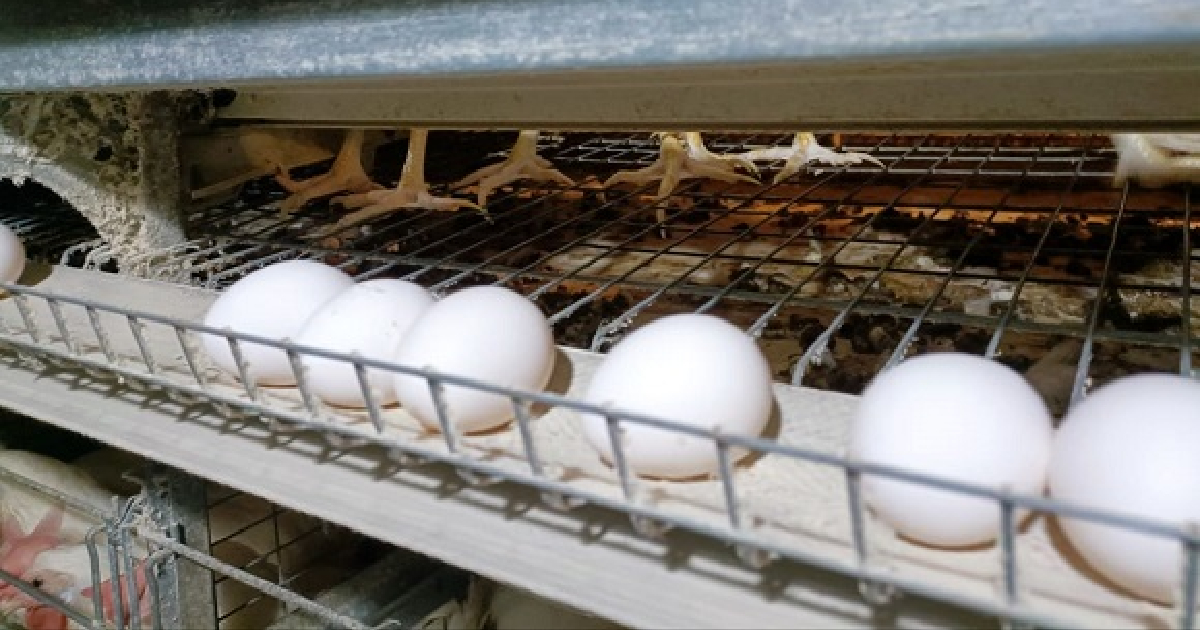The Egg production in Cuba 50% down Due to food shortages and lack of funding to obtain raw materials to produce them, officials agreed.
In an interview with an official portal CubePad, George Luis Barabar Lopez“Poultry production in Cuba is currently at 50 percent capacity in terms of animal numbers and production,” said the head of the Food and Poultry Trade Group (Gealav).
While the manager didn’t provide the total number of eggs — or chicken meat — produced in 2023, he did provide data indicating that. This sector is a failure to find itselfin the middle A general crisis the country is going through.
According to Barabar, 99% of the raw materials used to produce feed (and for pig production) are imported, such as corn and soybeans. Along with these, 900 to 1,000 tonnes of fodder is produced daily To feed the birds.
However, 1,500 to 1,600 tonnes would be required daily if all the animals carried by the National Poultry Scheme were kept.
The manager alleges that these amounts will be sufficient “To meet the demand, as before, a consumer needs 10 or 15 eggs every month”.
The Distributing eggs through a basic basket in Cuba has descended Five eggs per person per monthBut in most provinces the government does not meet even that amount.
Parapar blames the U.S. government’s ban on Cuba’s limitations on access to the raw materials needed to produce the feed.
“The ‘blockade’ has limited the entry of ships with raw materials into the country, and few ships that come through the port of Havana do. Then, you have to transfer that to the whole country, and that means a high cost of resources,” the CubePad report said.
“We are working under that tense situation,” the official said.
By this argument, it is also justified that egg production is not profitable. “The cost of egg production ranges from 5.60 to 6 paise and it is sold to people at 2.08 paise, causing the company to lose millions of dollars,” he said.
The director of Gealav revealed another information that shows the critical situation of this sector in Cuba: Last Saturday, some farms gave their last feed to the animals.
He alleged that in poultry farming, the chickens have to work three or four days in safety to ensure they get the food they need. “A hen eats 107 to 110 grams depending on age and laying percentage. It’s under control, you have to do the calculations, weigh the feed. Today the country’s farms are working with one-day coverage and some have served their last meal today (last Saturday),” he said.
Also, due to Fuel crisisIt was recognized that feed takes time to reach the farms, which causes instability because “chicken is a very sensitive animal, it is easily stressed and then the expected production results are not obtained.”
It was in the first week of August A critical situation in feeding and production has decreased from 2,400,000 to 200,000 eggs per day.
In May and June, Technical problems in factories Egg cartons in Havana and Jatiponico also affected poultry production. In the middle of the production peak, Parbar pointed out, ““They lost thousands of eggs because they didn’t have trays.”
In the last quarter of 2022 and the first two months of 2023, no hatching activities were carried out in the country because the government was unable to import the necessary vaccines, which reflects “not being able to guarantee the replacement of one and a half years. “Birds..
“More than 50 percent of chickens in Cuba today are in the second forced molt, the second production cycle. And some even a third, the ideal is the same,” said Barabar. Due to aging, hens are not performing as expected and are laying fewer eggs, even though they are always consuming the same amount of food.
According to the manager, the poultry company plans to end the year with about 200,000 chickens instead of the current 500,000 chickens, and will seek to replace the rest in the second production cycle in the first half of 2024.


:quality(85)/cloudfront-us-east-1.images.arcpublishing.com/infobae/BH6NLAQGXJGADFWTENBUV7Z7RQ.jpg)
:quality(85)/cloudfront-us-east-1.images.arcpublishing.com/infobae/3GK63ATFOMFAYNUAQKUL4WUJFM.jpg)

:quality(85)/cloudfront-us-east-1.images.arcpublishing.com/infobae/SJ35ZLSJ5NB4BWVRJPSK74P7AQ.jpg)